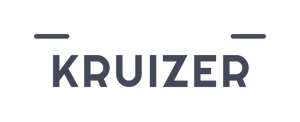Mortgage Lending: Navigating the World of Home Financing Options
Embarking on the journey of homeownership? Understanding the different types of mortgages and home loans can feel like navigating a maze. Fear not!
Conventional Loan
Conventional loans are the most common type of mortgage offered by banks and private lenders. They typically require a down payment of at least 3-5% and have stricter credit score requirements than some government-backed loans.
Adjustable-Rate Mortgages
An adjustable-rate mortgage (ARM) features interest rates that fluctuate over the life of the loan, based on market conditions. They often come with an initial fixed-rate period, followed by periodic rate adjustments. ARMs can be attractive due to lower initial interest rates but carry the risk of rate increases over time.

FHA Loans
FHA loans are backed by the Federal Housing Administration and designed to help lower-income and first-time homebuyers. They typically have lower down payment requirements and more lenient credit score criteria than conventional loans.
Fixed-Rate Mortgages
Fixed-rate mortgages offer an unchanging interest rate for the entire loan term, providing stability and predictability. These are a popular choice for borrowers who plan to stay in their home long-term and want consistent monthly payments.
Jumbo Loans
Jumbo loans are designed for homebuyers seeking to finance luxury properties or homes in high-cost areas. They exceed the conforming loan limits set by Fannie Mae and Freddie Mac, which means they often have stricter credit requirements and higher down payments.
HELOCs
A home equity line of credit (HELOC) is a type of loan that allows you to borrow against the equity in your home. It’s typically used for home renovations or large expenses and offers flexibility in repayment.
USDA Home Loans
USDA home loans are backed by the United States Department of Agriculture and aim to support rural homebuyers. These loans often require no down payment and have competitive interest rates.
VA Loans
VA loans are offered by the Department of Veterans Affairs and provide affordable financing options for eligible veterans, active-duty service members, and surviving spouses. They often require no down payment and have lower interest rates than conventional loans.
Temporary Rate Buydown
A temporary rate buydown is a financing option where the borrower pays upfront to temporarily reduce their interest rate. This can result in lower monthly payments during the initial years of the loan.
Portfolio Lending
Portfolio lending refers to mortgage loans that are originated and held by a lender, rather than being sold on the secondary market. This allows lenders more flexibility in underwriting guidelines and may be beneficial for borrowers with unique financial situations.
As you explore the world of mortgage lending, remember to consider your financial goals, risk tolerance, and long-term plans. By understanding the different loan types, you’ll be well-equipped to make an informed decision and find the perfect financing solution for your dream home.
Interest-Only Mortgages
An interest-only mortgage is a type of loan where the borrower pays only the interest on the principal balance for a set period, typically 5 to 10 years. After the interest-only period ends, the monthly payments increase significantly to cover both principal and interest. This mortgage option may be suitable for borrowers who expect significant income growth or plan to sell the property before the interest-only period ends.
Mortgage Refinancing
Mortgage refinancing involves replacing your current home loan with a new one, usually with more favorable terms or a lower interest rate. Frequently, homeowners opt for refinancing their mortgages to reduce their monthly payments, decrease the duration of their loans, or transition from an adjustable-rate mortgage to one with a fixed interest rate.
Loan Pre-approval and Pre-qualification
Before diving into the home buying process, it’s essential to understand the difference between loan pre-approval and pre-qualification. Pre-qualification provides a rough estimate of how much you may be able to borrow based on your income and credit score, whereas pre-approval involves a more thorough review of your financial situation and results in a formal mortgage offer. A pre-approval letter can give you an edge when making an offer on a home, as it shows sellers that you are a serious buyer with financing in place.
With so many mortgage options and factors to consider, it’s crucial to do your research and consult with professionals to find the best fit for your needs. By understanding the ins and outs of the mortgage lending process, you can make informed decisions and move one step closer to owning your dream home.

Сергій Немченко – експерт у галузі дизайну інтер’єру, його роботи відображають гармонію стилю, комфорту та інновацій. Він досліджує останні тенденції в оформленні простору, надаючи читачам свіжі ідеї та практичні поради. Сергій ділиться своїми знаннями та досвідом у сфері дизайну, пропонуючи інноваційні рішення та цінні поради для створення гармонійного та стильного інтер’єру.





